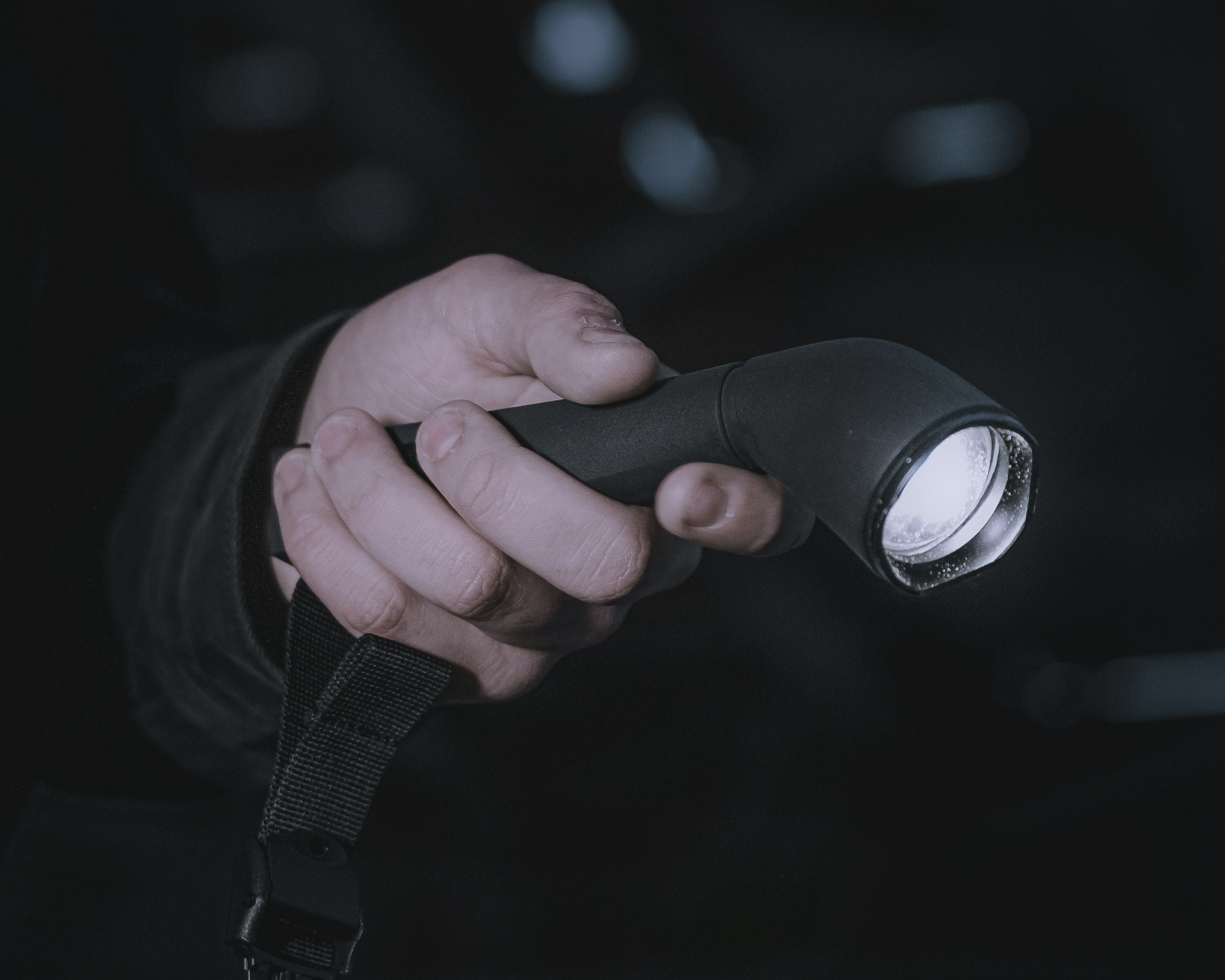As we continue our exploration of EDC utility items, we now turn our spotlight (pun intended) into the flashlight or electric torch (for those Brits out there). A reliable, compact flashlight will come in handy in unforeseen circumstances where you need to illuminate your surroundings, maybe even in emergency situations. Let’s address some of the key factors or concepts you need to know when choosing a flashlight for your EDC collection.
Table of contents
- Definition
- Size and form factor
- Brightness measure
- Battery life
- Ingress protection rating
- Impact resistance
- Key takeaways
Definition
Whether is to face a power outage, looking for stuff in obscure places, or finding your way in the outdoors at night, adding a flashlight to your EDC kit could save the day. To fit into our EDC definition, we’ll try to focus on flashlights which are small enough to be carried as part of your daily loadout.
They should be compact, long-lasting, and powerful enough for most daily life uses. Fair warning, there might be some overlap with flashlights designed with other uses in mind. Specifically for activities like camping, law enforcement, or search and rescue, for example.
Size and form factor
First of all, an EDC flashlight should be compact enough to provide portability and ease of access. We can find flashlights small enough to be carried in the pocket. But there are larger ones that could be carried on a backpack to go camping or hiking, for example.
No matter the way of transportation, it should still be light enough that it won’t bog you down with all the extra weight. Otherwise, a heavy flashlight, will fail to provide the functionality and efficiency that you’re looking for in such an EDC item. Common form factors include standard, micro, pen, and tactical.



Brightness measure
Most flashlights utilize LED bulbs as they tend to be brighter and more efficient compared to normal incandescent bulbs. The light they emit (or brightness) is measured in an unit called lumen, which can go up to 3000+ lumens.
This is the second most important factor in an EDC flashlight. However, for everyday tasks or outdoor activities, chances are you won’t need more than 900 lumens. Common ranges of how many lumens are needed for some specific tasks or activities is shown below. To read at night or to look under the bed, there’s no need for overkill with a 3000 lumens flashlight.

Battery life
Third most important aspect of an EDC flashlight is definitely its battery life. Don’t be fooled by their size, a quality flashlight should be able to last you for a long time. Most flashlights have lithium or lithium-ion rechargeable batteries, which provides a higher capacity to store power.
Some might tell you that alkaline batteries provide a brighter light, at the cost of constant replacement and being heavier. Regardless of the source of power, most modern flashlights come equipped with different brightness settings and battery level indicators. All these added bells and whistles will help you conserve power accordingly.

Ingress protection rating
If you’re planning to take your flashlight for outdoor activities or work, this is a key factor to consider. Ingress protection rating (or IP rating) is conformed by two digits, which basically represent the level of protection in an object against water and dust. You can refer to the chart below to better understand the different levels of protection an EDC flashlight can have.

The highest level of protection possible will be that of a rating of IP68, proving the item’s quality and chances of surviving under the most extreme weather conditions. But unless you’re venturing into the desert or jungle, a flashlight with a rating of IP66 might be just right for you.
Impact resistance
Last but not least, being an item intended for constant use, it needs to be resistant – specifically to impact. Most EDC flashlights are made of tough, highly-resistant materials such as aluminum, stainless steel or titanium for the body, plus strengthened glass for the lens.
When choosing an EDC flashlight, you should stay away from cheap materials that are easy to break. Because more likely than not, daily use could take a heavy toll on inexpensive but unreliable products made of plastic or other low-quality materials.

Key takeaways
Here are the key points you should have learned about flashlights:
- Three most important factors to consider in a flashlight are size, brightness, and battery life.
- An IP (ingress protection) rating will tell you how resistant is a flashlight against dust and water.
- Look for rugged, quality materials which provide a higher impact resistance for your flashlight.
I trust you’ll find this information helpful during your quest for that trusty flashlight. Stay tuned for future posts (check out our recent posts here). Should you have any questions, please leave a comment below or reach out to us. Until next time!


